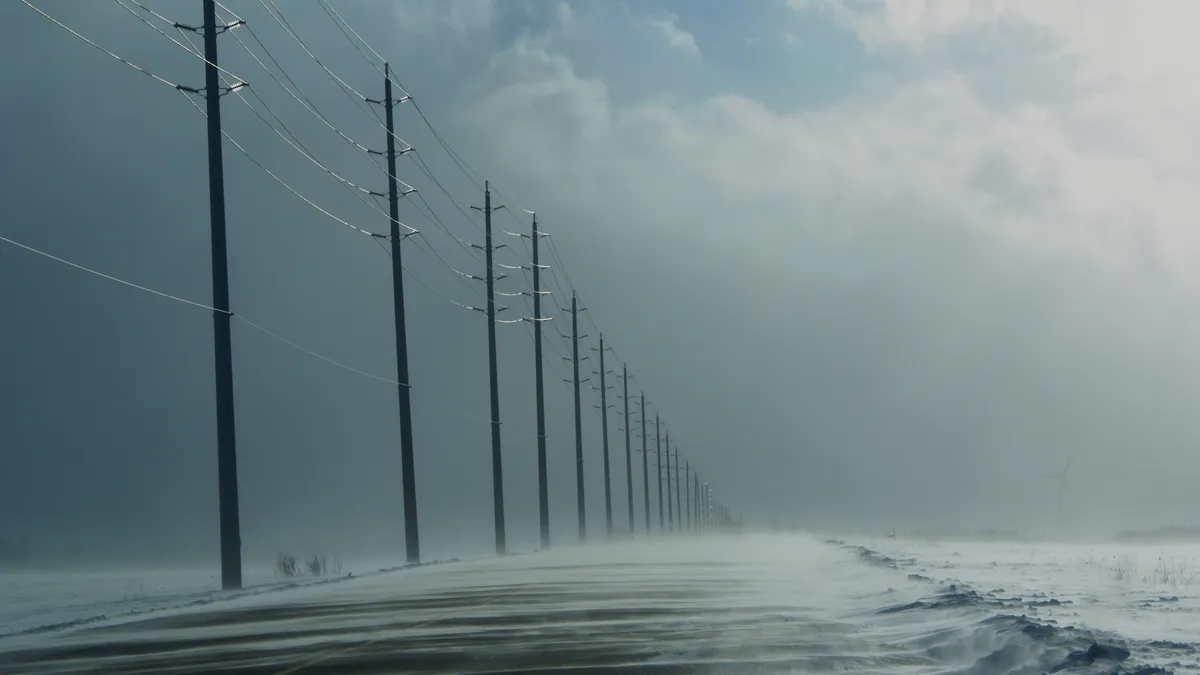New England has adequate power supplies for normal winter weather, but could face shortfalls if there is a long cold stretch because of its limited ability to import natural gas, according to the Federal Energy Regulatory Commission’s annual winter energy market and reliability assessment released Thursday.
The Electric Reliability Council of Texas and Midcontinent Independent System Operator regions also face winter-time power supply risks, but both areas took steps since Winter Storm Uri in February 2021 to better prepare for tough winter conditions, FERC staff said during the agency’s monthly meeting Thursday.
Utilities and grid operators across the United States have more than adequate power supplies for normal winter conditions, according to the report.
“But we also know based on the last several years that extreme weather can occur quite frequently and all over the place in different forms, and, obviously, extreme weather can wreak havoc,” FERC Chairman Richard Glick said.
The National Oceanic and Atmospheric Administration expects the East Coast, and much of the South and Southwest will have warmer-than-normal winter temperatures while most of the central U.S. will see typical winter temperatures, according to the assessment.
FERC Commissioner Willie Phillips took little solace in NOAA’s forecast.
“It's telling that as we sit here in 2022, we're all breathing a sigh of relief, that there's just a forecast for a mild winter,” Phillips said. “Just because there's a forecast doesn't mean there won't be extreme weather.”
Acknowledging that New England, ERCOT and other areas have taken steps to prepare for the winter, Phillips noted there could be disruptions to coal deliveries to power plants and there are ongoing supply chain problems that could affect grid reliability.
Further, Phillips warned about the possibility of cyberattacks that aim to take advantage of extreme weather events.
“What if we have a one-two punch? What if there's an extreme weather event that sets down a large portion of a region, our critical infrastructure, and then on top of that, since it's no secret that we can sometimes not be prepared for extreme weather, there's a cyber attack?” Phillips asked. “Are we prepared for that?”
Forward natural gas prices for this winter, which drive electricity costs, are up 30%, to $6.82/MMBtu on average compared to last winter’s settled prices, according to the assessment.
Forward winter-time gas prices for New England jumped nearly 40% to $23.57 per million British thermal units from $17.08/MMBtu a year ago. New England imports liquefied natural gas to help meet its winter fuel needs and is competing against demand from Europe and Asia. In Europe, LNG prices for the winter currently trade above $30/MMBtu, FERC staff said.
The increase in U.S. gas prices is largely driven by growing U.S. gas exports, which are expected to increase 24.3% this winter to 13.4 billion cubic feet a day on average, up from 10.8 Bcfd last winter, staff said. Some of the gas price increases are driven by FERC’s slow pace in reviewing proposed gas pipelines, according to FERC Commissioner James Danly.
“In some cases, it's driven by what I view to be unnecessary ‘gilding the lily’ for environmental review,” Danly said. “If we have delays and processing uncertainty and regulatory uncertainty that stall the development of this infrastructure, that is absolutely critical in some regions, is in fact driving the scarcity and price increases, then we're failing to do our duty properly.”
In a media briefing, Glick said FERC has been approving pipelines and other gas infrastructure, but has had to respond to court orders overturning aspects of the agency’s previous gas decisions that were made when Danly was the agency’s general counsel.
Those court decisions have caused delays and created regulatory uncertainty, according to Glick.
“We've seen projects actually canceled because regulatory agencies haven't actually followed their legal requirements,” Glick said. “So we're trying to do everything we can, as required by the courts. We're trying to move things along as quickly as we can.”
FERC is trying to add staff to speed up the agency’s gas infrastructure reviews, Glick said.
Further, gas price hikes are driven by global demand for U.S. gas, not a lack of pipeline capacity, according to Glick.
One of the factors driving up gas demand is the premature retirement of coal-fired power plants, especially in MISO and the PJM Interconnection, FERC Commissioner Mark Christie said during the meeting. The shuttered coal-fired power plants are largely being replaced by natural gas-fired generators, Christie said.
“The loss of coal units, it's really starting to bite now in reliability and in consumer cost,” he said.
Decisions around what types of power plants should be built are up to states, not FERC, Glick told reporters.
“We're here to deal with the output or the results of what states decide the resource mix should be and there are always challenges associated with the transition,” Glick said.
The idea of restoring coal-fired units is “fantasyland,” according to Glick. “That's like saying, I should just try out for the Mets because I think I can make the Mets. You know it's not going to happen,” Glick said. “We just have to deal with what reality is, and reality is the generation mix that states choose.”























